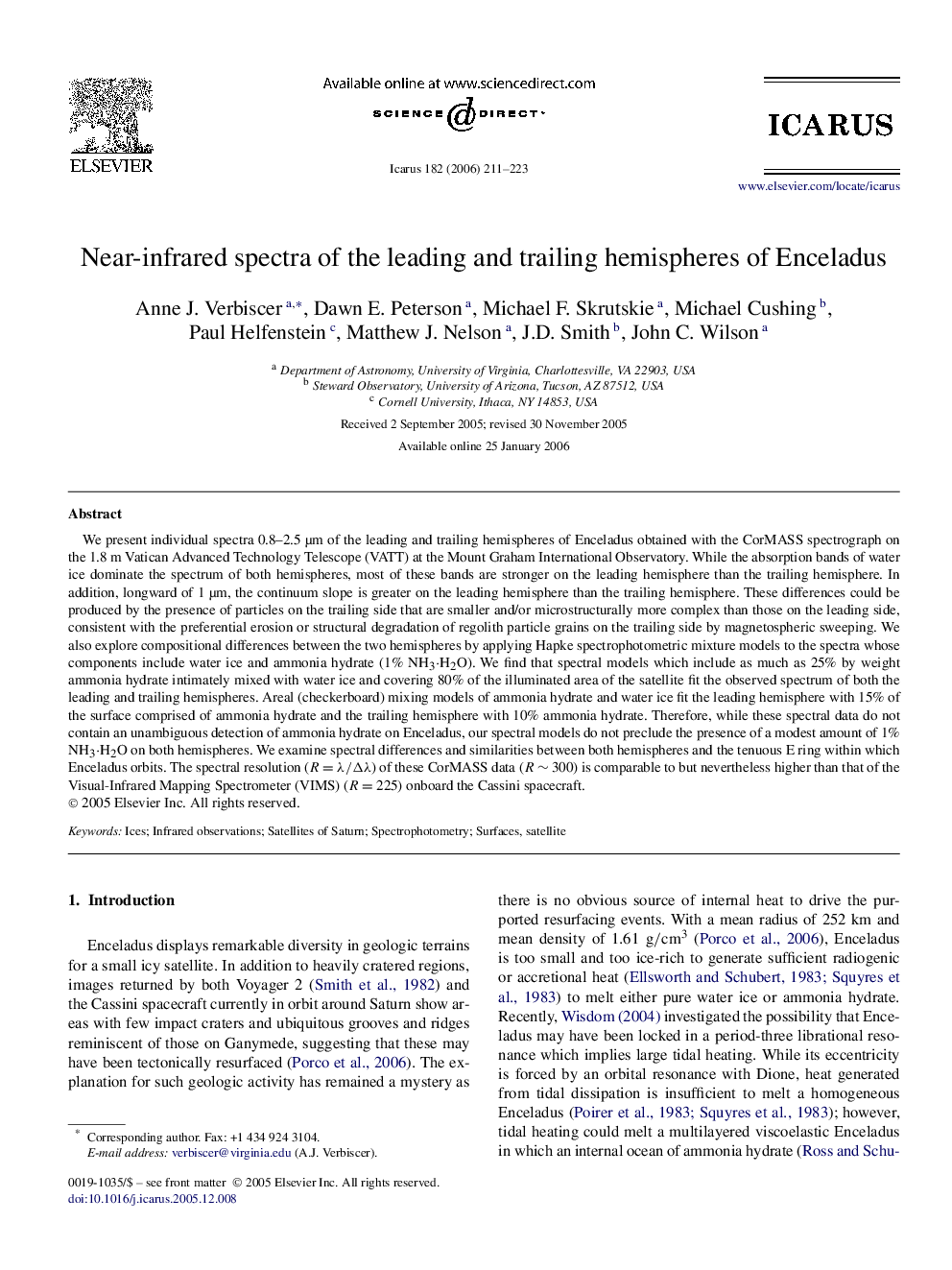| Article ID | Journal | Published Year | Pages | File Type |
|---|---|---|---|---|
| 1775752 | Icarus | 2006 | 13 Pages |
We present individual spectra 0.8–2.5 μm of the leading and trailing hemispheres of Enceladus obtained with the CorMASS spectrograph on the 1.8 m Vatican Advanced Technology Telescope (VATT) at the Mount Graham International Observatory. While the absorption bands of water ice dominate the spectrum of both hemispheres, most of these bands are stronger on the leading hemisphere than the trailing hemisphere. In addition, longward of 1 μm, the continuum slope is greater on the leading hemisphere than the trailing hemisphere. These differences could be produced by the presence of particles on the trailing side that are smaller and/or microstructurally more complex than those on the leading side, consistent with the preferential erosion or structural degradation of regolith particle grains on the trailing side by magnetospheric sweeping. We also explore compositional differences between the two hemispheres by applying Hapke spectrophotometric mixture models to the spectra whose components include water ice and ammonia hydrate (1% NH3⋅H2O). We find that spectral models which include as much as 25% by weight ammonia hydrate intimately mixed with water ice and covering 80% of the illuminated area of the satellite fit the observed spectrum of both the leading and trailing hemispheres. Areal (checkerboard) mixing models of ammonia hydrate and water ice fit the leading hemisphere with 15% of the surface comprised of ammonia hydrate and the trailing hemisphere with 10% ammonia hydrate. Therefore, while these spectral data do not contain an unambiguous detection of ammonia hydrate on Enceladus, our spectral models do not preclude the presence of a modest amount of 1% NH3⋅H2O on both hemispheres. We examine spectral differences and similarities between both hemispheres and the tenuous E ring within which Enceladus orbits. The spectral resolution (R=λ/ΔλR=λ/Δλ) of these CorMASS data (R∼300R∼300) is comparable to but nevertheless higher than that of the Visual-Infrared Mapping Spectrometer (VIMS) (R=225R=225) onboard the Cassini spacecraft.
